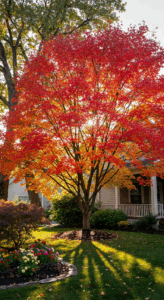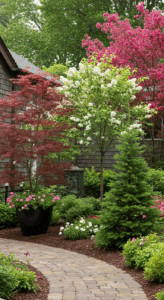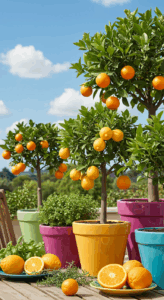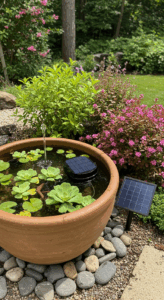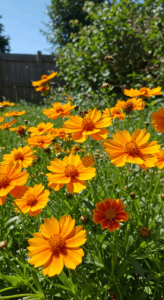1. The Bucket Brigade: Why Container Gardening Rocks!

Container gardening, particularly using buckets, offers a myriad of advantages for urban gardeners and those with limited space. This method allows for flexibility in placement, enabling you to optimize sunlight exposure and protect plants from pests. Buckets can accommodate various soil types, ensuring better drainage and aeration, which is particularly beneficial for root vegetables. Moreover, they can be moved easily to adapt to changing weather conditions, making them an ideal choice for growing vegetables in unpredictable climates. With the ability to grow fresh produce right outside your door, container gardening not only enhances your diet but also adds a vibrant touch to your living space, making it an enjoyable and practical hobby for both novices and seasoned gardeners alike.
2. Lettuce Love: Crisp Greens for Every Bucket
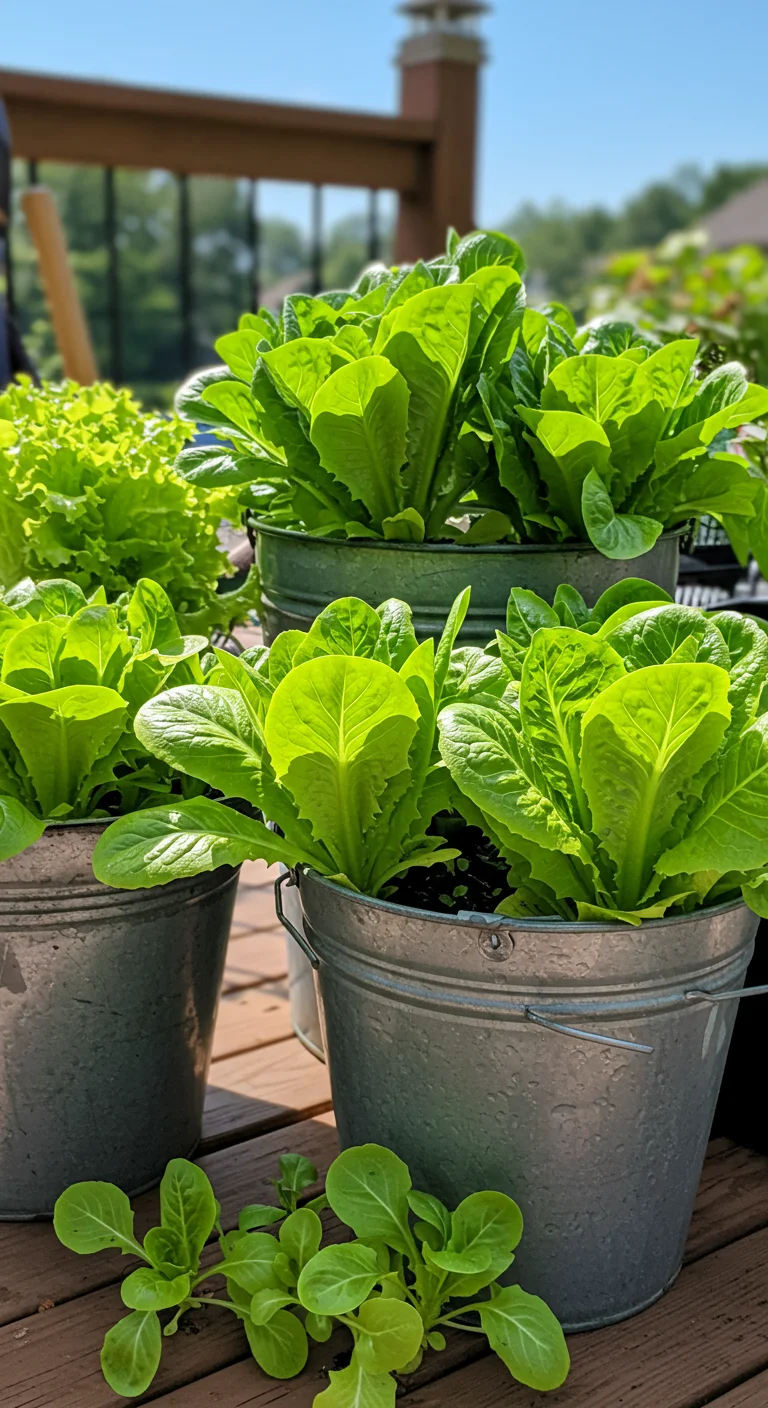
Lettuce is a fantastic option for bucket gardening, offering a variety of crisp greens that thrive in limited space. Varieties such as romaine, butterhead, and leafy lettuce can be grown in buckets of at least 5 gallons, allowing for ample root development. These greens prefer cooler temperatures and should be positioned in a location with partial sun to avoid wilting. Regular watering is essential, as lettuce has shallow roots and dries out quickly. Consider using a quality potting mix enriched with compost for optimal growth. With a few seeds sown every couple of weeks, you can enjoy a continuous harvest of fresh, crunchy leaves throughout the growing season, enhancing your salads and sandwiches with a home-grown touch.
3. Tomatoes on Tap: Juicy Varieties for Container Success
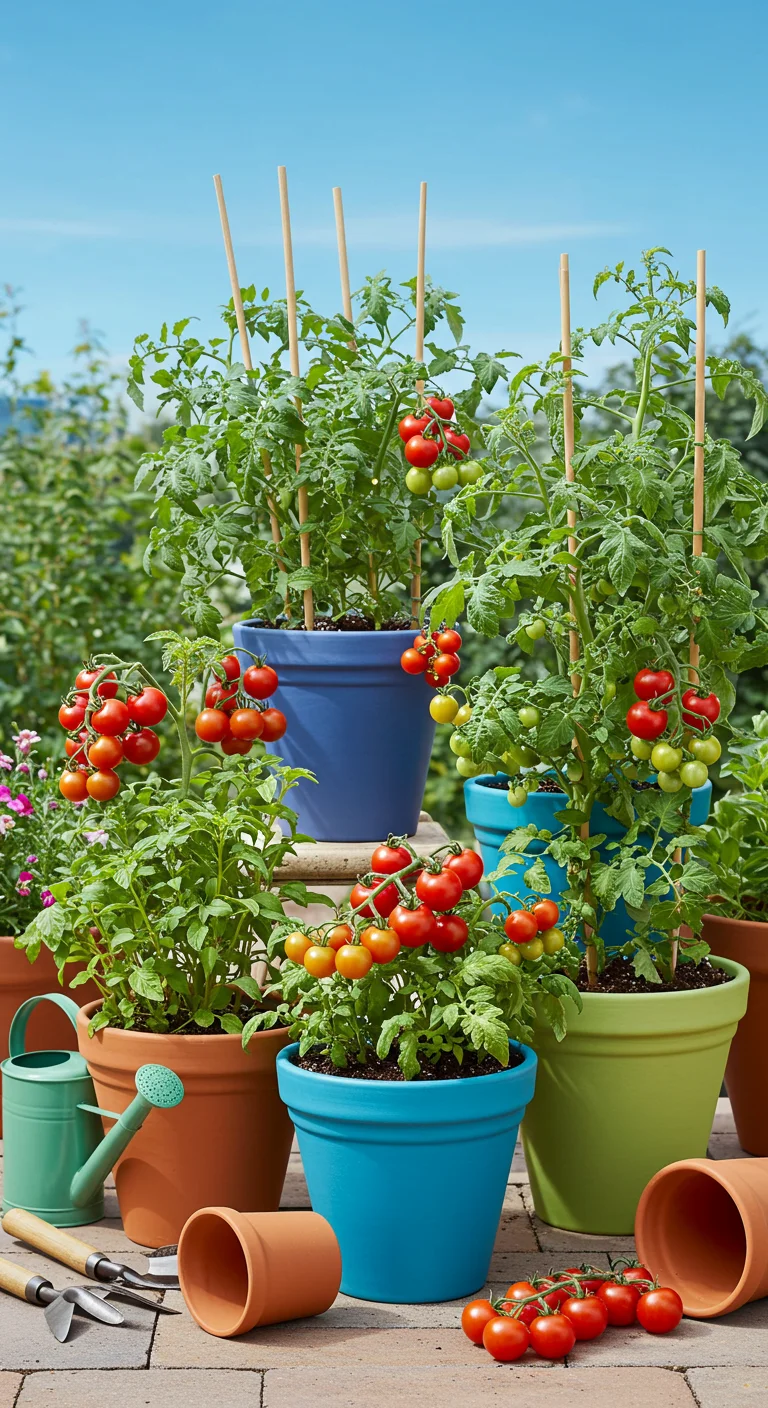
Growing tomatoes in containers can be a rewarding experience, especially when you choose the right varieties. Look for determinate types like ‘Patio Princess’ or ‘Tiny Tim,’ which are compact and ideal for limited space. Indeterminate varieties such as ‘Sweet 100’ or ‘Sun Gold’ also thrive in buckets but may require staking for support as they grow. Ensure your containers are at least 5 gallons to provide ample space for roots and good drainage. Use high-quality potting soil enriched with compost to nourish your plants. Regular watering and fertilization will keep them healthy and productive. With the right care, you can harvest a bounty of sweet, juicy tomatoes from your patio or balcony, making container gardening an excellent option for urban gardeners.
4. Peppers in a Pinch: Spicy Options That Thrive in Buckets
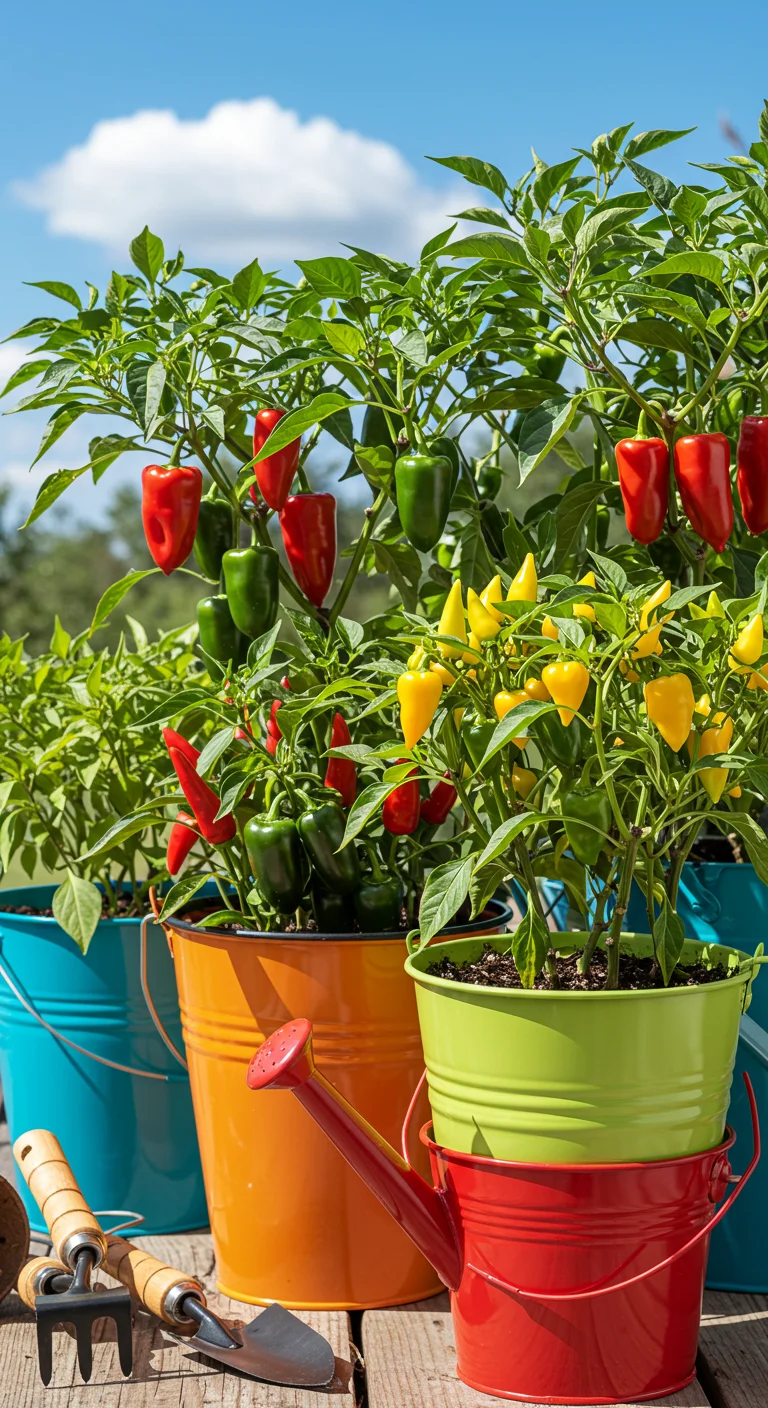
If you’re looking to add a kick to your container garden, consider growing peppers, which thrive exceptionally well in buckets. Varieties like jalapeños, serranos, and even the fiery habaneros can flourish in limited space, provided they receive plenty of sunlight and warmth. Opt for a bucket that is at least 5 gallons to ensure adequate root development, and use a well-draining potting mix enriched with organic matter. Remember to water consistently but avoid waterlogging, as peppers prefer slightly dry conditions between watering. Regular harvesting encourages continuous fruit production, so keep your eye on those vibrant peppers as they ripen. With just a bit of attention, you can cultivate a spicy bounty that adds flavor to your meals and a splash of color to your garden!
5. Carrots in Containers: Rooting for Success
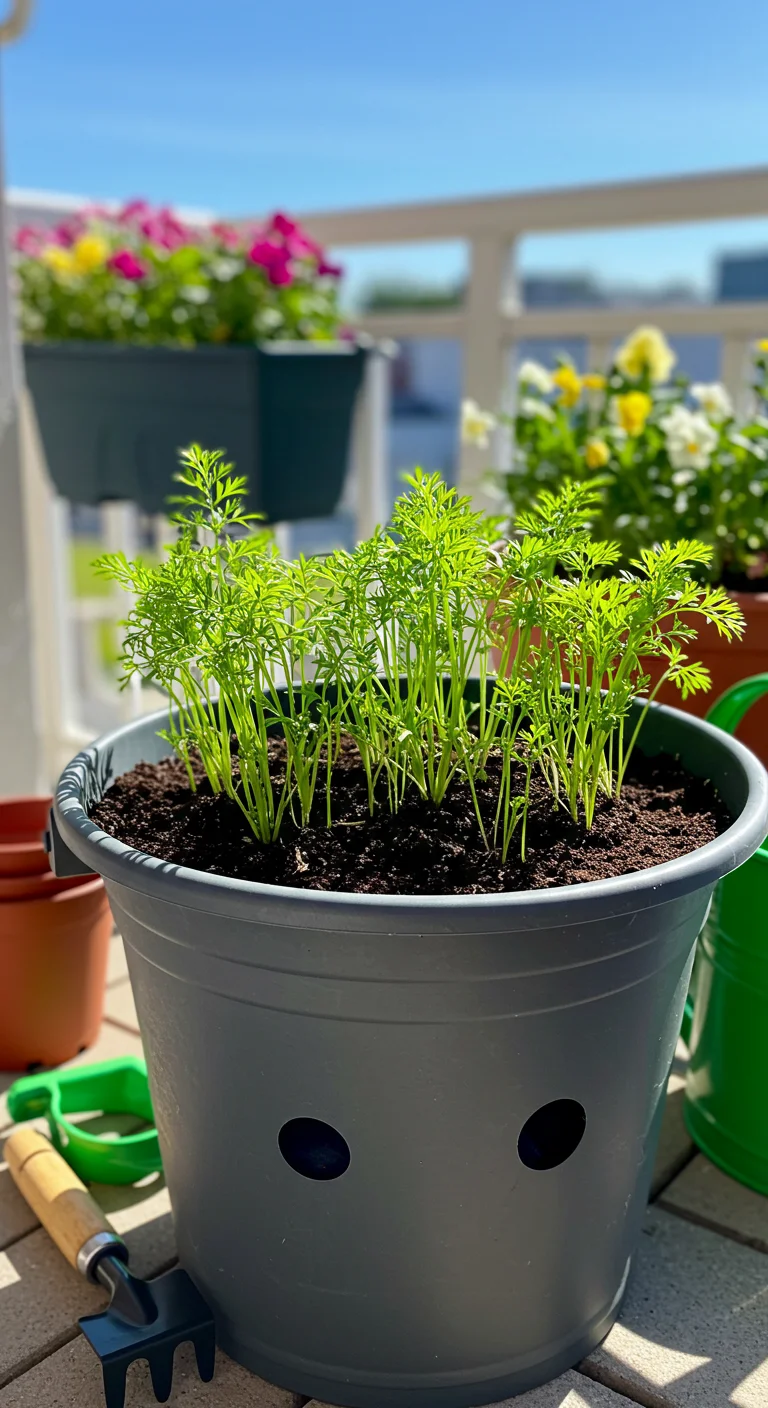
Growing carrots in containers is a fantastic way to cultivate these crunchy vegetables even if you have limited garden space. Choose deep buckets of at least 12 inches to accommodate the roots, and fill them with loose, well-draining potting soil. To plant, sow carrot seeds about 1/4 inch deep and provide adequate spacing, as overcrowding can hinder their growth. Ensure the containers are placed in a sunny spot, receiving at least 6 hours of sunlight daily. Regular watering is crucial, especially in warmer months, but avoid waterlogging. Additionally, you can thin the seedlings once they are a few inches tall to give the remaining carrots room to flourish. With a little patience and care, you can enjoy a bountiful harvest of sweet, homegrown carrots right from your balcony or patio!
6. Radishes Ready to Roll: Fast-Growing Favorites
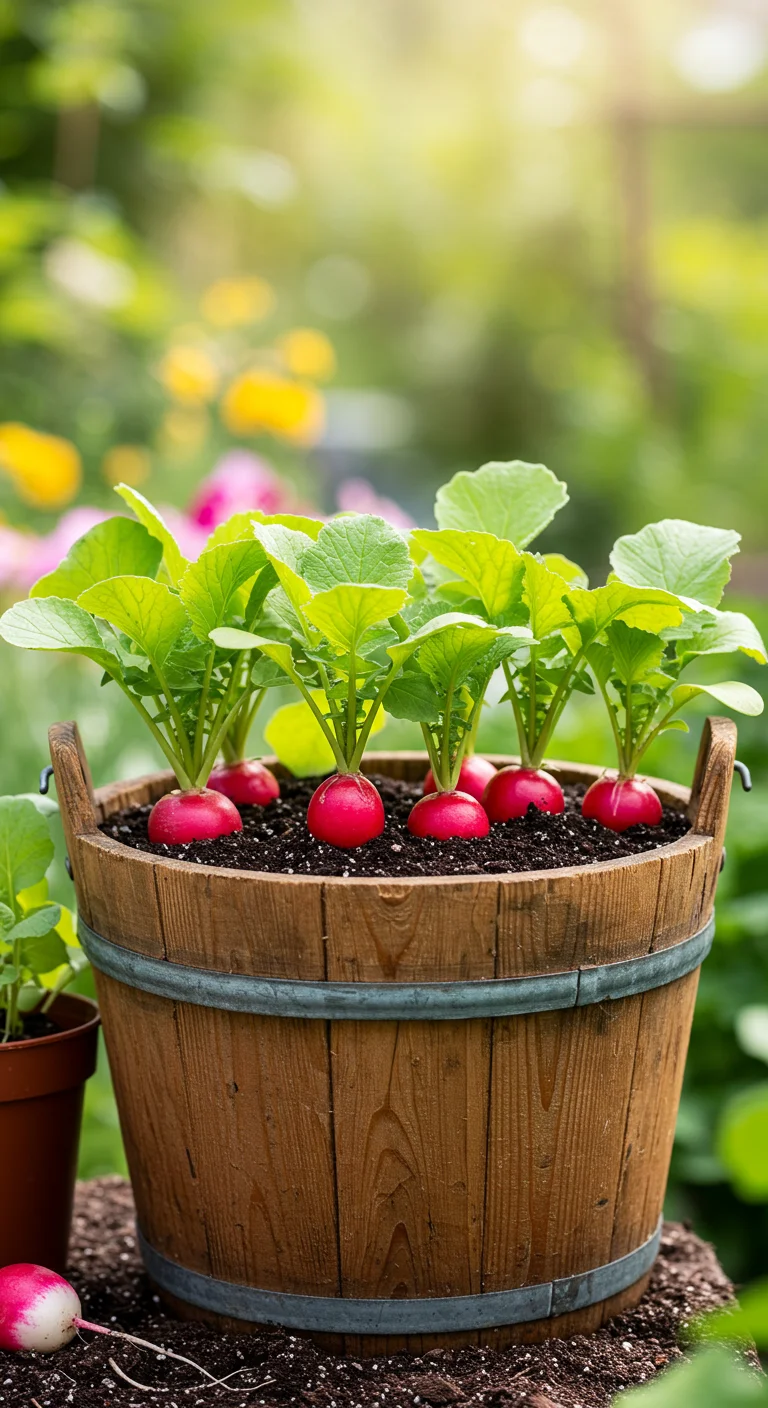
Radishes are a fantastic choice for bucket gardening due to their rapid growth and minimal space requirements. These vibrant root vegetables can go from seed to harvest in as little as three to four weeks, making them perfect for gardeners seeking quick rewards. Choose a medium-sized bucket with good drainage and fill it with nutrient-rich potting soil. Plant radish seeds about an inch apart, ensuring they are sown at the appropriate depth. Regular watering is essential, but avoid waterlogging, which can lead to rot. As they mature, you’ll appreciate their crisp texture and peppery flavor, perfect for salads or snacking. Plus, radishes thrive in cooler temperatures, allowing you to plant them in early spring or fall for a continuous harvest throughout the growing season.
7. Herbs on the Go: Fresh Flavors in Small Spaces

Herbs are a fantastic addition to any container garden, especially for those with limited space. Growing herbs in buckets allows you to enjoy fresh flavors right at your fingertips. Consider starting with popular choices such as basil, thyme, cilantro, and parsley, which thrive in smaller containers and require minimal care. Use well-draining potting mix and ensure that your buckets have drainage holes to prevent waterlogging. Placing your herb containers in a sunny location will encourage robust growth; most herbs need at least six hours of sunlight daily. Regularly harvesting your herbs not only enhances their flavor but also encourages bushier growth. Enjoy the convenience of snipping fresh herbs for your culinary creations, elevating your dishes with vibrant tastes straight from your own garden, no matter the size of your living space.
8. Spinach Superstars: Leafy Greens that Love Buckets
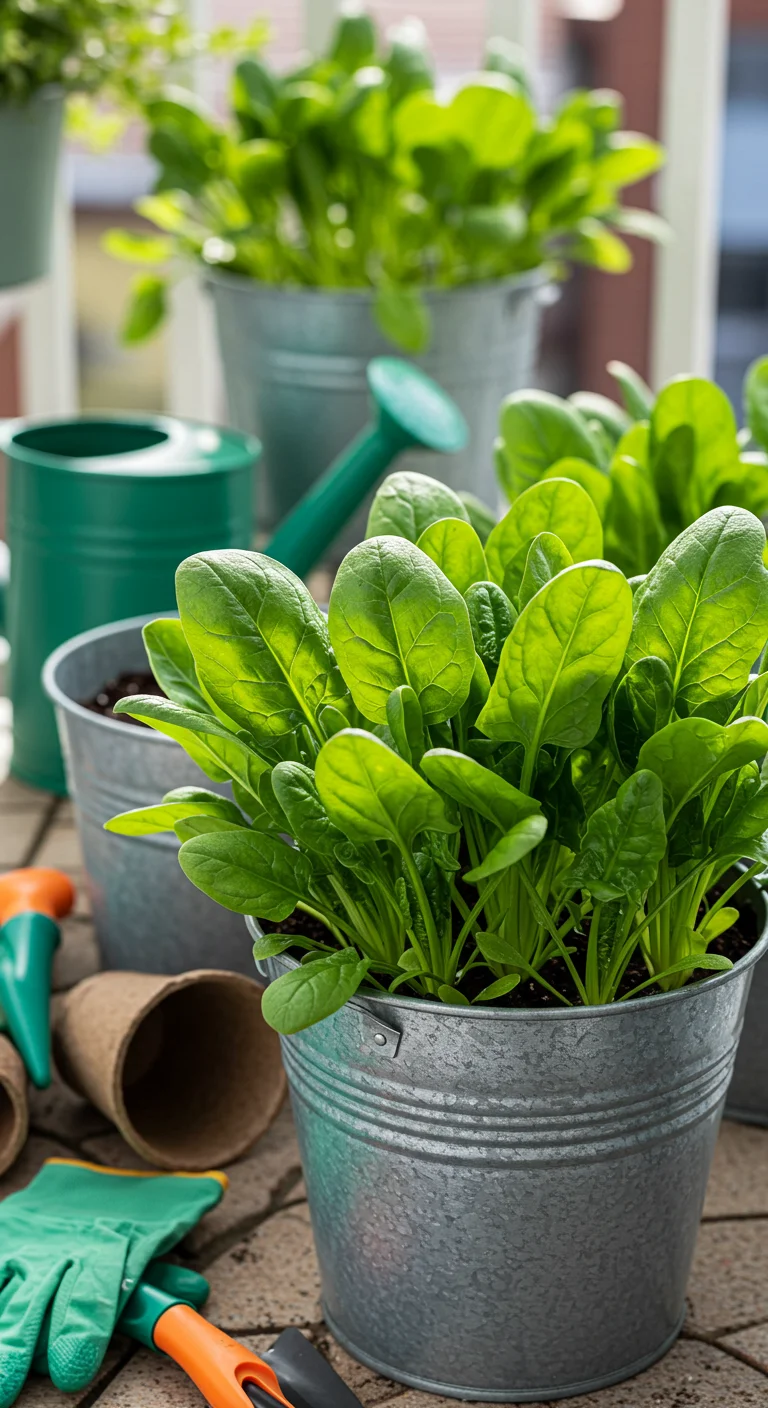
Spinach is a champion among leafy greens, thriving in bucket gardens with minimal fuss. These nutrient-rich plants prefer cooler temperatures, making them ideal for early spring or fall planting. Ensure your buckets have good drainage to prevent root rot, and fill them with a high-quality potting mix enriched with organic matter. Regular watering is essential, but be cautious not to overwater; the soil should remain consistently moist but not soggy. Spinach can be harvested multiple times by cutting leaves at the base, promoting new growth and extending your harvest. With a bit of attention, you can enjoy fresh, homegrown spinach for salads, smoothies, or cooking right from your balcony or patio.
9. Cucumbers Climbing High: Vertical Gardening in Containers
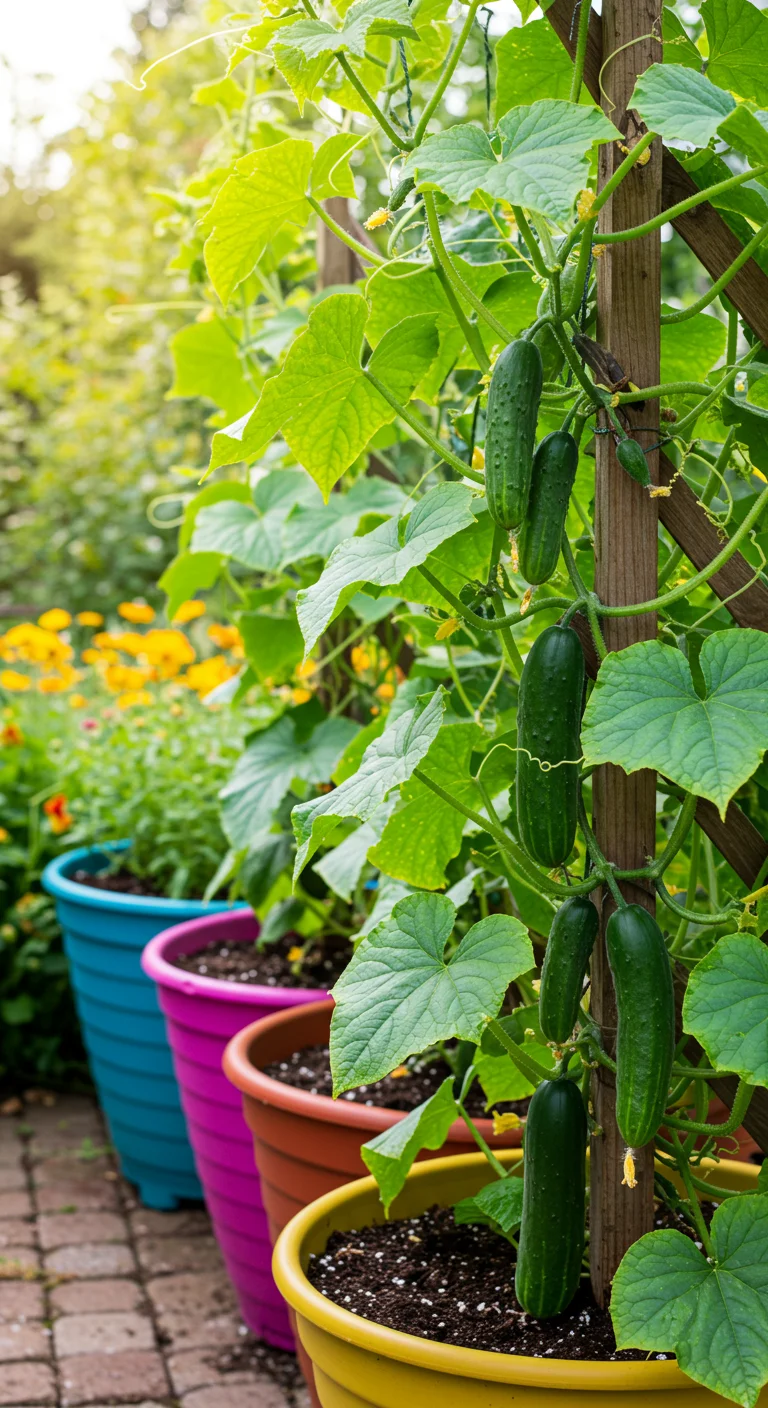
Cucumbers are an excellent choice for vertical gardening in containers, as they thrive in limited space and can produce a bountiful harvest. To successfully grow cucumbers in buckets, select a variety that is suited for container gardening, such as ‘Bush Champion’ or ‘Patio Pickle.’ Use a sturdy container with adequate drainage and fill it with nutrient-rich potting mix. Install a vertical trellis or support system to encourage the vines to climb, maximizing your space and improving air circulation. Regularly water your cucumber plants and provide them with a balanced fertilizer every few weeks to promote healthy growth. Not only will this method enhance your garden’s aesthetics, but it will also yield fresh cucumbers right at your fingertips, perfect for salads and pickling.
10. Beets That Beat the Odds: Colorful Roots in Buckets
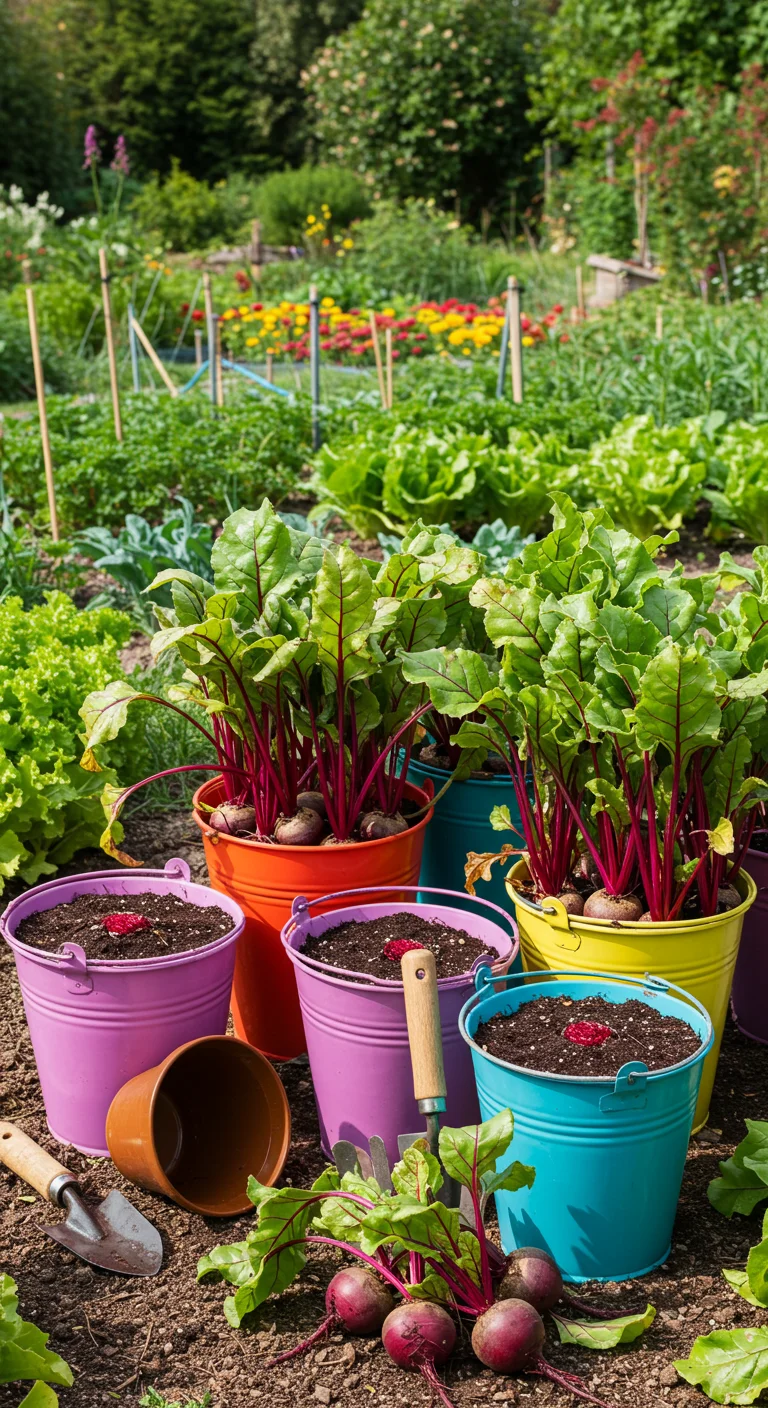
Beets are an exceptional choice for bucket gardening, as they offer vibrant colors and nutritious roots while thriving in limited space. These resilient vegetables can flourish in a variety of bucket sizes, ideally ranging from 5 to 10 gallons, which provide ample room for their deep-growing roots. To ensure success, fill your bucket with high-quality potting soil enriched with compost for optimal drainage and nutrients. Beets prefer cooler temperatures, so planting them in early spring or late summer can yield the best results. Regular watering is essential, but avoid waterlogging to prevent root rot. Additionally, thinning seedlings to allow adequate spacing will promote healthier growth. With their deep red, golden, or striped varieties, beets not only add flavor to your meals but also a splash of color to your container garden.
11. Green Beans Galore: Pole vs. Bush Varieties for Containers
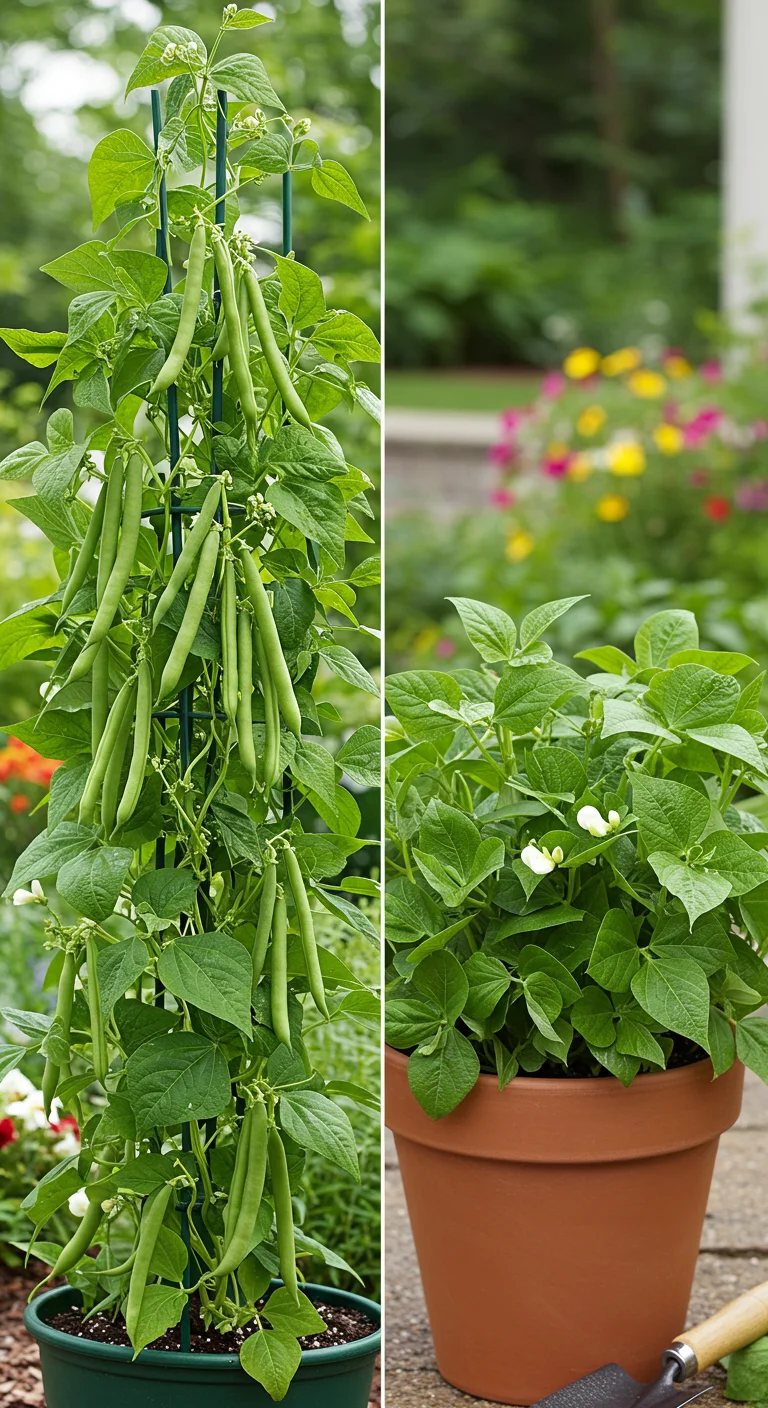
When it comes to growing green beans in containers, you have two primary choices: pole beans and bush beans. Pole beans, like ‘Kentucky Wonder’, require vertical support and can grow up to 8 feet tall, making them ideal for maximizing space in smaller gardens. They thrive in a container that is at least 5 gallons and will produce an abundant harvest throughout the growing season. In contrast, bush beans, such as ‘Blue Lake’, are compact and can grow up to 2 feet tall; they are perfect for gardeners with limited space since they don’t require staking and can be planted in smaller containers of about 3 gallons. Both varieties are easy to grow, but the choice ultimately depends on your available space and growing preferences.
12. Potatoes in Pots: Digging Deep for Bountiful Harvests
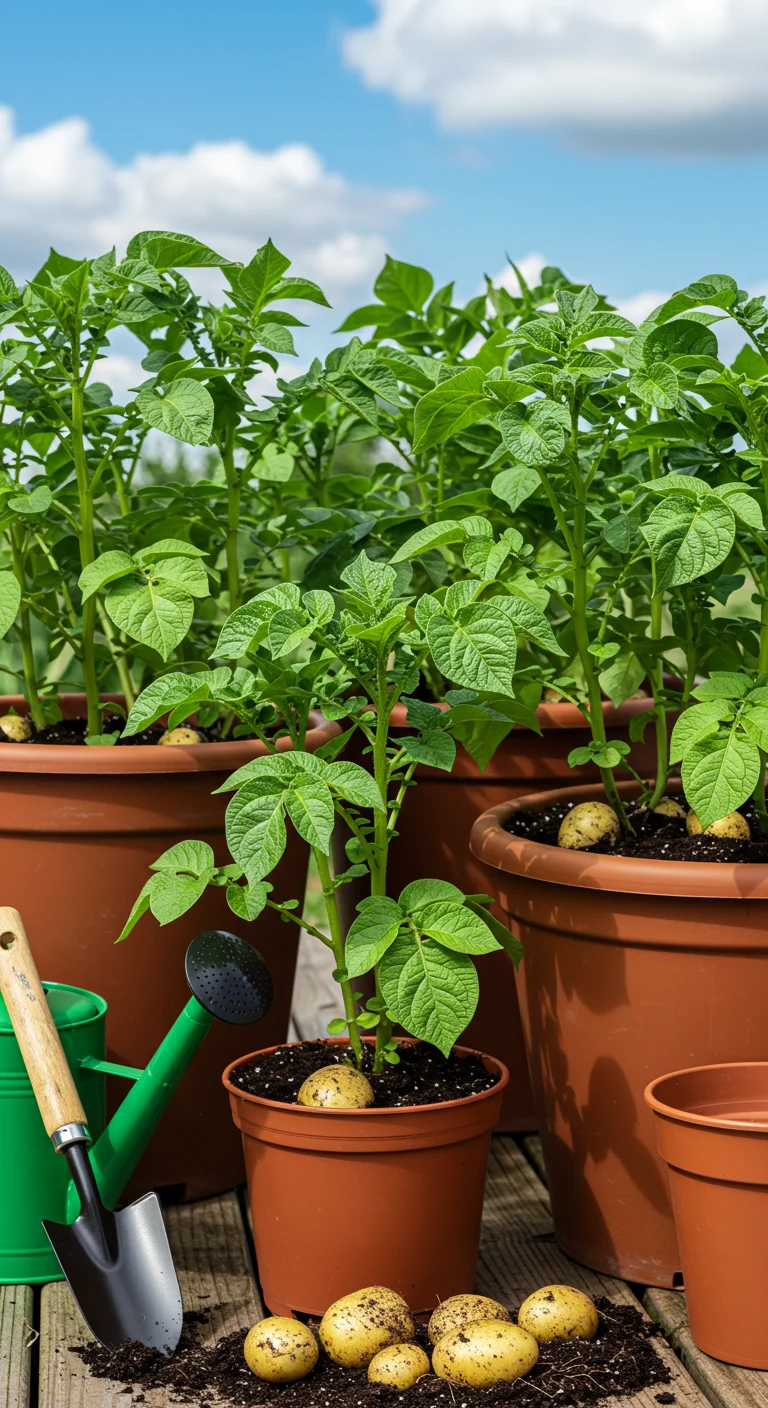
Growing potatoes in pots is an excellent way to maximize space and yield, especially for those with limited gardening areas. Choose a sturdy container, at least 12 inches deep, to allow the roots to expand. Start by adding a layer of well-draining potting mix at the bottom and then place seed potatoes on top, covering them with another layer of soil. As the plants grow, ‘hill’ them by adding more soil around the stems to encourage tuber development. Water consistently, ensuring the soil remains moist but not soggy, and place the pots in a sunny spot to promote healthy growth. Harvesting is easy; simply dump the pot when the foliage dies back for a bountiful yield of fresh, homegrown potatoes.

